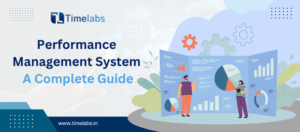Employee engagement reflects how employees experience value and feel motivated in their work. The more engaged your employees are, the more satisfied and productive they have more chances to be with you for longer.
In a recent study report of the retail industry in the COVID-19 era, it was observed that employee engagement directly influences productivity, and eventually, the total business profits. Brands featuring a higher level of employee engagement observed 15 percent improved productivity along with 26 percent reduced turnover and 20 percent reduced absenteeism. Businesses that invested in employee programs or a dedicated people management system featured higher than the subsequent competitors concerning business productivity.
Revealing Top Drivers of Employee Engagement 2022
Employee engagement is not just about satisfaction and happiness. Instead, it serves as a commitment that your employees feel towards your business. When an employee is engaged, they feel valued and motivated. Employees are also more productive. Most importantly, they will care about your business and its success.
Ensuring that your employees are engaged is crucial for top-class business growth. When implemented successfully, it will result in a group of friendly colleagues driven by proper emotion –instead of the next promotion or salary.
Some Core Employee Engagement Drivers In The Modern Era Are:
Physical and Mental Well-being: As mental health awareness continues gaining popularity, the entire concept of workplace wellness has become the topmost consideration. One of the common causes of workplace-related stress is increasing workload. While most of us struggle with balancing work and personal life, employers need to ensure that the subsequent employee is not overworked.
Purpose and Value:
Research reveals that 80 percent of employees feel engaged when their work aligns with their company values. Specifying your business proposition and mission is vital for connecting with the employees. It helps offer a clear and cohesive solution towards which employees will work. Therefore, you should come up with a clear and concise message that employees can easily relate to with the help of goal-setting practices.
Safety and Fairness:
Employees need to feel cared for and respected in their workplace environment. Fair treatment from the senior team looks into several factors –from progression to workload to the pay scale. Moreover, when employees feel safe to voice their concerns, it is important to ensure their overall well-being. It is crucial to create a confidential and trusting environment wherein your employees can feel safe throughout.
Employee-manager Relationship:
The relationship of the manager with the project manager or department head directly impacts productivity, willingness to do the job, and happiness. While every management style might be distinct, you must invest in fair leadership and ample training to make sure that employees are looked after.
Necessary Tools to Complete the Job:
It is a simple yet the most overlooked driver of employee engagement. Your staff should have access to necessary employee engagement tools and resources like dedicated HRM software for completing the designated job. Training, capacity, and technology are some important factors to consider. To keep the employees satisfied, you should adopt cutting-edge, trending technologies as per the industry standards.
Learning & Development:
Humans tend to flourish when presented with new learning experiences and specific challenges. You should, therefore, grant access to interactive learning platforms wherein staff can consider improving their skills across a wide range of domains. It serves to be a great way to support the individual professional development of the employees.
The Overall Work Environment:
Whether your employees work on-site or from home, the work environment plays a vital role in determining their productivity and resulting job satisfaction. Factors like flexibility, air quality, temperature, and lighting are important considerations while evaluating the work environment.
Clarity and Communication:
Regular communication is vital. Employees who remain up-to-date with individual feedback, business performance, and company updates are more likely to feel engaged and valued in the given role. It is also crucial that employees know the respective responsibilities and duties in the given job role.
Co-worker Relationships:
In a study report, it was observed that workforce engagement system levels increased by as much as 50 percent when workers developed close relationships with their colleagues. Developing a friendly and positive environment should be vital for your employee engagement strategy.
Benefits and Recognition:
While salary is an important consideration, the benefits and reputation in the company are equally important. Most businesses invest in dedicated employee perks from reward schemes to healthcare, local discounts, and other rewards to boost employee productivity and engagement.
Conclusion
As effective employee engagement strategies are implemented in your company, you can observe positive results with employee satisfaction, productivity, and staff turnover. Ensure that you are tracking the tangible benefits of your total investment by conducting a proper employee engagement survey.



